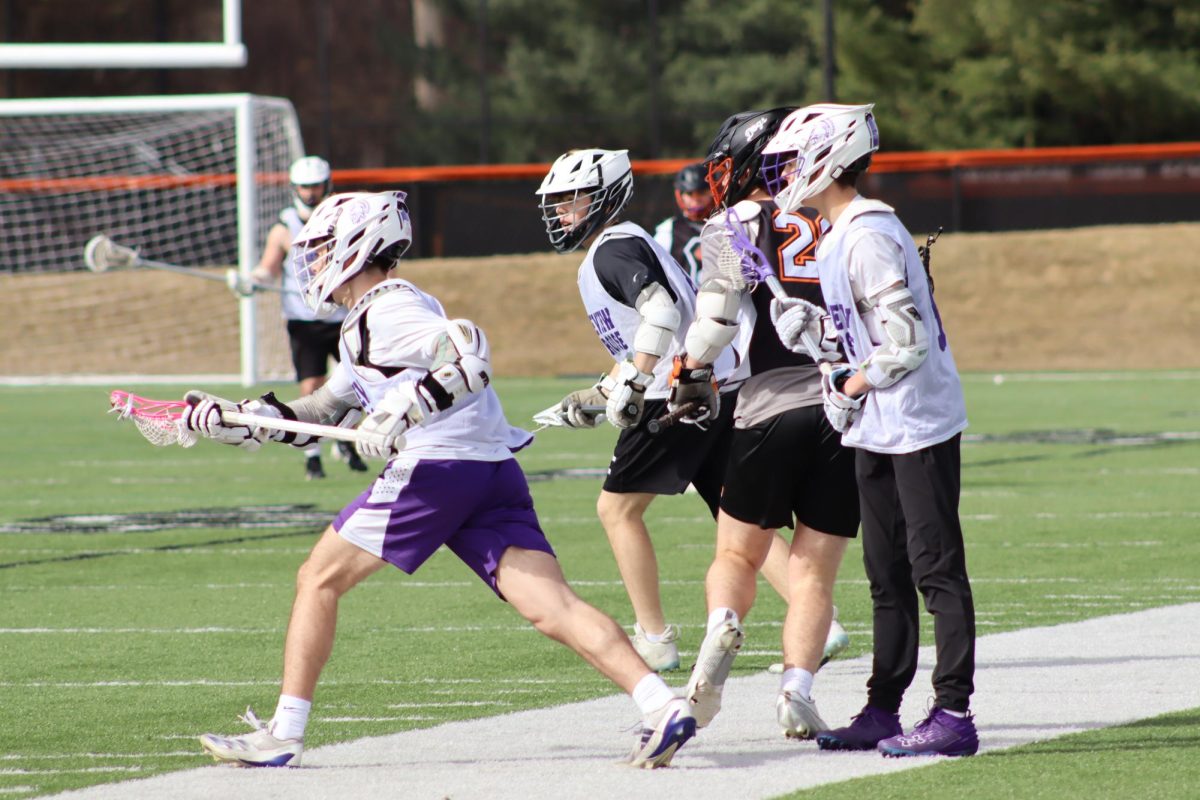
Lakeview High School’s lacrosse team has been competing for 17 years, yet it still lacks the recognition other sports receive. While technically considered a school club sport, it remains classified as non-funded, meaning it operates without essential resources like transportation, equipment, and officials provided for by the district.
The question remains for the athletes, coaches, and supporters: Will lacrosse ever gain the same status as other high school sports?
For head coach Jerry Haadsma, who has been with the team for three seasons, the biggest obstacle is still financial.
“The biggest challenge is obviously the pay-to-play,” Haadsma said. “Kids have to pay more because the officials are paid through boosters, and the costs are high. That is one of our biggest expenses.”
Although the district is now paying coaches, thanks to recent changes, the reliance on outside funding means the lacrosse team continues to struggle to offer the same opportunities as other sports that receive district funding.
Fundraising remains the team’s primary source of income, with the team often organizing fundraising events just to keep the program running. Without district support, these efforts are essential for covering costs that other school sports take for granted. Lacrosse students pay $350 for pay-to-play each season.
“If lacrosse were an official school sport, it would become more accessible to more students,” Haadsma explained.
He believes lacrosse shares many parallels with other popular school sports like soccer, football, and basketball, making it a valuable and an inclusive option for a wider group of athletes.
Basic gear, including a helmet, stick, gloves, and pads, can easily cost hundreds of dollars. Without district funding to offset these expenses, many families face financial barriers.
The issue of transportation is also a persistent challenge. Unlike other school teams, the lacrosse players don’t have buses provided for away games, requiring them to make their own traveling arrangements, while many of their away games are over an hour away.
“Traveling is probably the worst part,” said sophomore Elijah Schuemann. “We don’t get buses, so we must find other ways to get there. If we could just get transportation, it would help a lot.”
While the team faces significant challenges, Haadsma is optimistic that things will change. He hopes securing funding for coaches and officials will be the first step toward increasing the sport’s visibility and accessibility.
“There was always a disconnect between the lacrosse program and the school,” Haadsma said. “But now, I’m working on bridging that gap.”
The future of school funding for lacrosse at Lakeview High School remains uncertain, but one thing is clear: the dedication and resilience of these athletes won’t waiver. As they continue to push through challenges and advocate for change, they’re not just fighting for recognition – they’re building a legacy that future players can be proud of.